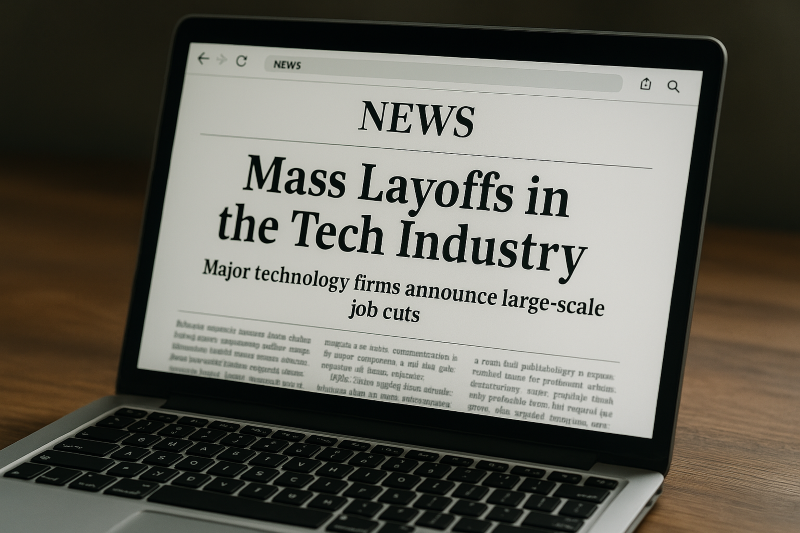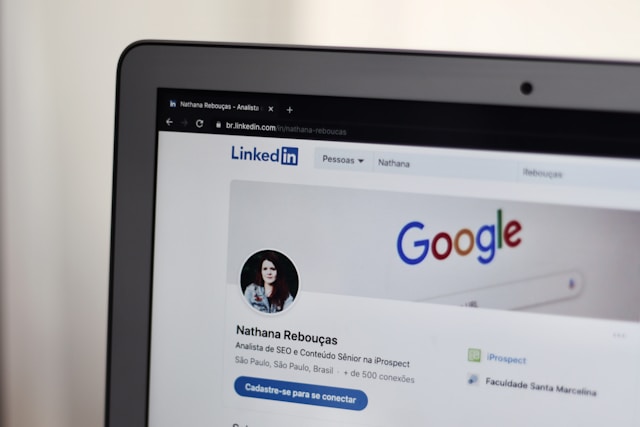Graduates face an unexpected challenge: transitioning from school to the workforce in a fast-changing tech world. Here’s how one student navigated the confusion—and what it reveals about the bigger picture.

The Moment After the Celebration
The confetti had barely settled when Elina Gomez realized something was off. She had just graduated with a degree in computer engineering—an achievement her whole family celebrated with proud tears and a home-cooked feast.
But somewhere in that quiet space between celebration and responsibility, the shift came.
It wasn’t dramatic. It started with a to-do list she never quite finished. Then came the endless tabs—job boards, resume builders, cover letter templates. Some days she felt productive, sending out applications to five, maybe even ten roles she genuinely wanted. Other days, she stared at her screen for hours, unsure if her qualifications even mattered.
A month after graduation, she found herself sitting at the edge of her bed again, laptop open, her degree propped on the desk behind her like a reminder.
“I was so sure the hardest part was over,” she says. “No one tells you how confusing the ‘after’ part can be.”
There were no grades left to chase, no fixed syllabus to follow. Just a blank calendar, job listings that asked for ‘3 years experience,’ and a creeping sense of doubt she didn’t know how to name.
Was she behind already?
Should she have done more internships?
Was everyone else moving forward while she stood still?
In that moment, the success of graduation felt both real and unreal—like she had reached the top of a mountain only to discover the peak was just the edge of a much steeper climb.
Elina’s story isn’t unique—and that’s precisely why it matters.
The Problem: A Smooth Graduation, A Bumpy Start
Each year, thousands of students in STEM programs proudly earn their degrees—only to walk straight into uncertainty.
Many expect that after years of grinding through math problems, late-night labs, sleepless group projects, and back-to-back deadlines, a job will be waiting on the other side. After all, isn’t that what school was building them for?
But the reality, as Elina and many others have discovered, is often far more complicated.
“You graduate thinking you’re ready,” she says. “But then you realize there’s a gap between what you know and what the industry wants.”
The problem isn’t always a lack of knowledge—it’s the shape of that knowledge, and the silent assumptions that come with it. In school, success is structured. Assignments have rubrics. Labs have objectives. Mistakes are feedback, not failure.
But in the real world, the rules are blurry. Employers want experience—but experience comes from getting hired. Job listings mention tools you’ve barely touched. Interviews feel like exams no one prepared you for.
And then there’s the silence.
No lectures, no class announcements, no grades. Just long days refreshing email inboxes and wondering if your resume even made it past a bot. The support system that surrounded you for years—professors, classmates, advisors—suddenly disappears, and you’re left figuring out how to navigate everything alone.
For some, this uncertainty is energizing—a chance to explore, take risks, build something new. But for many others, it’s deeply unsettling.
“This isn’t just about technical skills,” Elina says. “It’s about expectations, mental health, direction, and identity. Everything shifts after graduation. You start asking questions you never had time to think about in school.”
Who am I if I’m not a student?
What do I really want to build?
Am I falling behind already?
In STEM especially, where performance is often measured in logic and output, this emotional uncertainty can feel like failure. But it isn’t. It’s part of a transition that most people experience—but very few talk about.
The Shifting Landscape of Tech Employment

And now, there’s another layer: the changing job market in tech itself.
Just a few years ago, the tech industry was booming. Companies were hiring aggressively, and demand for developers, engineers, analysts, and cybersecurity specialists seemed endless. Startups flourished. Remote work opened up more opportunities than ever before.
But in recent years, a different picture has emerged.
Mass layoffs at major tech firms. Hiring freezes. An oversaturation of junior applicants vying for fewer entry-level roles. Suddenly, the demand-supply balance tipped, and young professionals—especially those fresh out of school—started feeling squeezed out of the market.
Elina felt it too.
“You open LinkedIn and see that 500 people applied for the same job you just did,” she says. “And most of them have more experience than you. It’s hard not to take that personally.”
Recruiters now favor applicants who can hit the ground running. Companies are being cautious, leaning toward experienced candidates who require less training. In effect, many entry-level roles are no longer entry-level.
So even for highly motivated graduates with strong portfolios, the competition is steep—and the emotional toll is real.
Because the truth is, graduation doesn’t feel like a finish line. It feels like being dropped into the deep end and told, “Swim.”
And unless you’re lucky enough to land in the right current, most of us start by just trying not to sink.
Context: The Invisible Transition Gap

A 2023 report by the National Association of Colleges and Employers (NACE) showed that while STEM degrees still offer strong long-term job prospects, entry-level graduates often face mismatches between their academic background and market demands.
The problem isn’t a lack of knowledge. It’s that the learning environment and the working environment are very different ecosystems.
“In school, everything is structured,” says Dr. Maria Han, an academic advisor and industry liaison. “In industry, the instructions are vague, the problems are messier, and there are people skills involved. That’s a huge adjustment.”
Moreover, with rapid changes in technology—especially in fields like AI, renewable energy, and embedded systems—graduates often find that the tools and platforms they studied are already evolving.
A software engineering graduate may be well-versed in Java and C++, but find job listings asking for experience in Go, Rust, or containerization tools like Docker. An electronics student may know how to design circuits on paper, but is expected to build production-ready boards with tight deadlines and real-world constraints.
The Solution: Learning Doesn’t End with the Degree

A month after graduation, the momentum of celebration had faded. Elina found herself in a cycle of job applications, rejection emails, and quiet doubt. At first, she held out hope for that perfect job—the one that matched her degree, paid well, and gave her a sense of purpose.
But as the weeks turned into months, something shifted.
“I kept applying and getting nothing back,” she says. “Eventually I asked myself, What can I do with the time I have now, instead of waiting for someone to give me a chance?”
So she decided to stop waiting—and start building.
Elina began re-skilling, one step at a time. She took short courses in cloud computing and system design. Not because they were trending buzzwords, but because she was genuinely curious—and because the industry was leaning in those directions. Platforms like Coursera and freeCodeCamp helped her grasp new concepts, but more importantly, they reminded her that learning didn’t have to stop with her degree.
She joined Discord communities and online forums for early-career developers, where conversations were casual but rich with insight. “There was so much I didn’t know, and those spaces made it okay to ask ‘stupid questions,’” she laughs.
But the biggest breakthrough came when she stumbled into open-source contributions.
“I used to think open source was only for genius programmers,” Elina says. “But I learned that you can start by fixing typos in documentation or asking questions in GitHub issues. People appreciate it when you just show up and try.”
Even her small contributions—like adding comments to code or improving interface layouts—taught her how teams work, how code evolves in the real world, and how to collaborate asynchronously across time zones and cultures.
And slowly, all of it began to stack up.
Where Experience Begins: Real-World Alternatives to the Job

In a competitive market where entry-level jobs often expect years of experience, graduates are finding other ways to build that experience themselves.
Some are turning to internships, even unpaid ones, just to get a foot in the door and gain mentorship. For many, internships become the springboard into full-time work—especially in smaller companies or nonprofits that value enthusiasm and adaptability over prestige.
Others are exploring freelance gigs or short-term contracts on platforms like Upwork or Fiverr. These may not always pay much, but they offer exposure to real client needs, timelines, and the challenge of delivering under pressure. It’s also a chance to learn how to communicate with stakeholders—something not always taught in classrooms.
Then there are personal projects, which have become the new resume.
One friend of Elina’s built a budgeting app for their family. Another automated weather notifications for a local farming group. These projects didn’t go viral, but they did show employers initiative, problem-solving, and follow-through.
And of course, open source remains one of the most accessible, visible ways to grow. It allows early-career developers to work on live codebases, get feedback from experienced contributors, and demonstrate both skill and collaboration.
Even learning in public—sharing weekly goals on LinkedIn, writing a blog post about debugging a problem, or tweeting lessons from a failed side project—can attract the right eyes. One of Elina’s weekly learning posts got noticed by a mid-size startup CTO, who appreciated her clarity and mindset. They reached out.
Eventually, she landed her first offer—not at a flashy tech giant, but at a startup building productivity tools for nonprofits. Her role: improving internal systems and fixing backend bugs. It wasn’t glamorous, and it wasn’t exactly what she imagined.
But it was real.
It gave her real feedback. Real collaboration. Real stakes. And slowly, she grew into it.
Growth Over Glamour
The turning point for Elina—and for many graduates—was realizing that the goal isn’t to start perfect. It’s to start somewhere.
Because a degree gets you through one door. But everything after that? That’s built on momentum, small wins, and showing up when no one’s watching.
The journey doesn’t always begin with a dream job. Sometimes it begins in a Discord chat, a GitHub issue, or a part-time contract that leads to something more. It begins when you stop trying to look ready—and start getting ready by doing.
That’s when the learning truly begins.
Challenges to the Solution: Burnout, Pressure, and the Comparison Trap

But it’s not always easy to stay hopeful.
Even with a job in hand, many young graduates feel overwhelmed. The fear of falling behind is constant, especially in tech fields where change is fast and visible. Social media only adds fuel to the fire, as peers post updates about promotions, awards, or international job offers.
“It’s hard not to compare,” Elina admits. “You start wondering if you’re doing enough, learning fast enough, succeeding fast enough.”
And that pressure has consequences. A 2022 study by the American Psychological Association found that early-career professionals in STEM reported higher-than-average levels of anxiety and burnout, often tied to feelings of inadequacy or unclear career paths.
The push to keep up can lead to overwork, isolation, or even abandoning the field altogether.
So what’s the fix?
Support systems.
Mentorship programs, peer discussion groups, better onboarding for new employees, and mental health awareness are all part of the solution. Colleges are slowly catching on—integrating career preparation, real-world projects, and soft skills into the curriculum.
But there’s still a long way to go.
Conclusion: The Journey Is Messy—And That’s Okay

Elina is now two years into her role. She’s not famous, not a founder, not a fast-rising star. But she’s building things that work, solving problems that matter, and helping interns feel a little less lost.
She’s also stopped trying to have it all figured out.
“I used to think success meant having a big job title or making six figures,” she says. “Now I think success is just… feeling proud of how far you’ve come. And excited for what’s next.”
Her story is a reminder that the real test doesn’t happen in a classroom—it happens in the quiet, uncertain space after you leave it. And that space, though uncomfortable, is where real growth happens.
The journey from graduation to career isn’t a straight line. It’s full of delays, detours, and doubts. But for every confused graduate sitting in front of a job board, there’s someone like Elina a few steps ahead—proof that figuring things out one step at a time is the path.
And maybe, that’s the story more of us need to hear.
✍️ Engineer & Aspiring Content Writer Based in Manila
